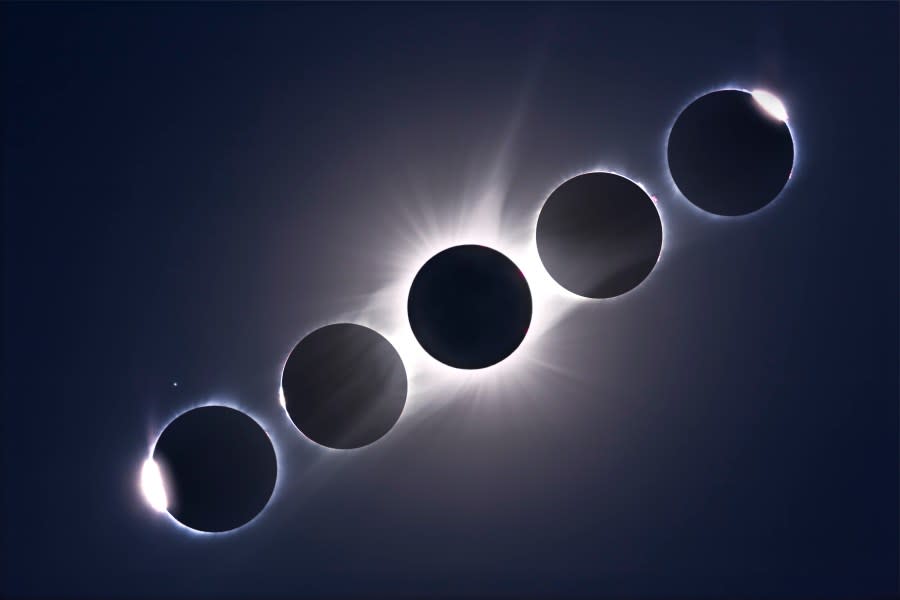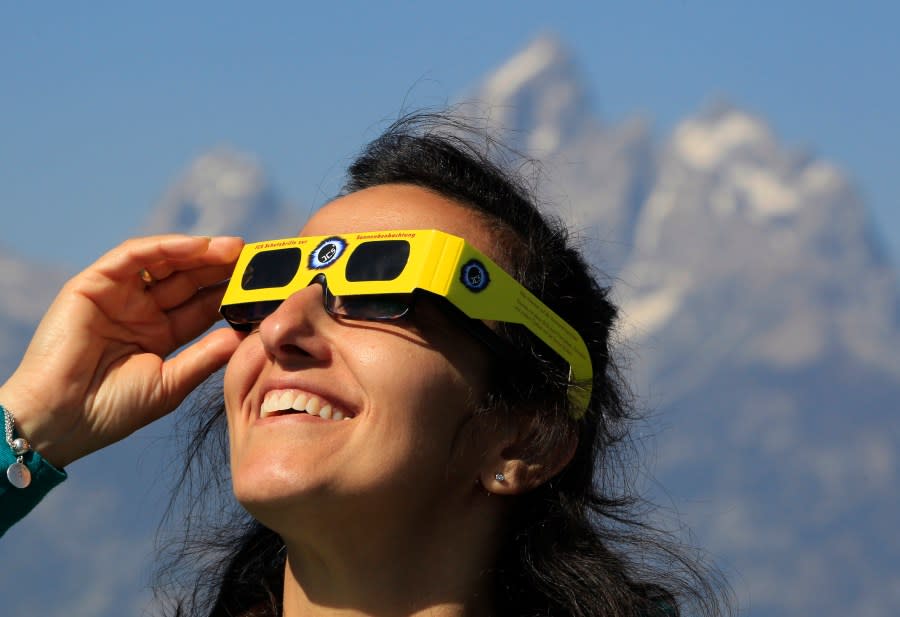Kansas eclipse chasers ready to fight the crowds for perfect viewing spot

TOPEKA (KSNT) – Kansans are hitting the road this spring to get the full view of one of the most impressive stellar events of the year.
People are eagerly anticipating the arrival of a total solar eclipse set to blanket much of the U.S. in darkness on Monday, April 8. This is the last time such an event will appear above the U.S. for the next two decades with the next total solar eclipse set to appear on Aug. 23, 2044.
Though Kansas is near the path of the eclipse with many living in the Sunflower State being able to see upwards of 90% of it, some are taking part in eclipse tourism this year to get the full experience. While hoping for an unforgettable adventure, they are bracing for crowds and backed-up traffic during their travels.
What to do if you see a mountain lion in Kansas
Danl Blackwood is one such individual. At the age of 70, he can’t wait to get his next photography project underway. He was present for the previous total solar eclipse that happened in August 2017.
“When you get into that total darkness, that is a giant huge jump in weirdness,” Blackwood said. “It can only be described by someone who has seen a total eclipse. It’s been a really long time since I’ve seen one.”

Blackwood said he plans to travel to Russellville in Arkansas with his camera equipment in April. Rather than taking photos of the eclipse itself, he has some other plans in mind.
“I’ve been trying to find a spot to see this eclipse that isn’t ridiculously far away,” Blackwood said. “My interest is not the eclipse itself, its what happens to the world visually and physically. Watching people watch the eclipse.”
Two EF-2 tornadoes hit northeast Kansas, NWS says
Similar to Blackwood, Shawnee County resident Dan Fellers, 74, is also planning to head out of state by driving to Texas with a group of friends. He’s already made plans to stay the night near the City of Austin and will be prepared to move around depending on weather conditions.
“We’re going to be mobile,” Fellers said. “We’re basically going to drive around, find a clear spot.”
Fellers said he plans to avoid the interstate by taking side roads only the entire time to avoid crowds and traffic jams. Driving during the event can be dangerous to attempt as the lighting will be unusual and many people will be distracted by the eclipse.
“They’re actually kind of scary if you actually see one, you’ll never forget it,” Fellers said. “Being able to go into darkness within minutes is pretty scary. Even if it is a cloudy day, you can still see the shadow coming. It’s ominous seeing a shadow coming by at 2,000 miles-per-hour.”
What to know for Kansas’ next total solar eclipse
Rick Heschmeyer, 66, of Douglas County told 27 News he will be heading to Broken Bow in Oklahoma alongside his two sons. Having seen what kind of crowds can be drawn by past eclipses, Heschmeyer is already expecting to stay mobile to find the right spot to view the event.
“If the 2017 eclipse was any indication, I am definitely expecting a lot of traffic,” Heschmeyer said. “I fully expect it to be just as bad because this will be the last eclipse to cross the continental U.S. for the next 20 years. The path crosses about 30 million people in the U.S., twice as much as the 2017 eclipse, and it’s getting a lot more publicity.”

Washburn University Physics Professor Karen Camarda, 55, of Douglas County said she and her husband are going to drive to Clinton, Arkansas in April. They are bringing equipment with them to view and take photos safely of the eclipse as it occurs.
“I’m really hoping that we’ll have some clear skies and see the eclipse happen,” Camarda said. “I also really like the shadows that occur just before and just after the eclipse. The shadows of the tree leaves during the eclipse is really fascinating to me.”
Tips for Kansas morel mushroom hunting in 2024
Camarda insists people take the necessary precautions when viewing the eclipse such as wearing eclipse glasses. Not using eclipse glasses or other methods to safely watch the eclipse happen can result in permanent eye damage for some people.
The eclipse will be completely viewable from parts of Mexico, the U.S. and Canada in April. To see the full eclipse next month in the U.S., you’d have to go to Oklahoma, Arkansas, Missouri, Illinois, Kentucky, Indiana, Ohio, Pennsylvania, New York, Vermont, New Hampshire or Maine. Learn more about the eclipse by clicking here.
A map showing the path of the eclipse, courtesy of NASA, can be found below. You can download this map online and other versions of it by clicking here.

For more Kansas news, click here. Keep up with the latest breaking news in northeast Kansas by downloading our mobile app and by signing up for our news email alerts. Sign up for our Storm Track Weather app by clicking here.
Follow Matthew Self on X (Twitter): https://twitter.com/MatthewLeoSelf
For the latest news, weather, sports, and streaming video, head to KSNT 27 News.

